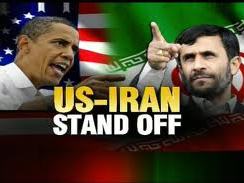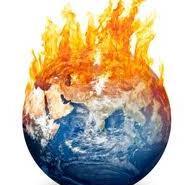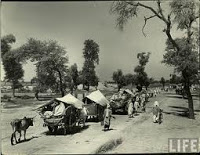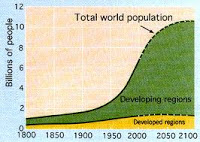The fifth edition of the Indian Premier League (IPL) 2012 will start on April 4, and will have 72 matches to be played on 12 different grounds across India. The preliminary schedule has nine teams playing in this fifth edition. Bollywood stars Salman Khan and Priyanka Chopra will dazzle the Indian Premier League's opening ceremony to be held at YMCA College of Physical Education on April 3. Superstar Amitabh Bachchan will host the opening ceremony of the cash-rich Twenty20 league. Defending champions Chennai Super Kings take on Mumbai Indians in the inaugural match of the 5th edition of the IPL, at Chennai's M A Chidambaram stadium, on 4th April 2012. Below given is the fixture for the fifth edition of ILP.
IPL 2012 Schedule |IPL 2012 Fixture | IPL 2012 Timings
30 Mar 2012
By
Admin
Related Posts with thumbnails for bloggerblogger widgets
Continue reading..
US in Iran | US involvement in Iran | US - Iran relationship
By
Admin
The IAEA report that Iran is clandestinely enriching uranium contributes to the escalation of tensions between U.S. and Iran. The immediate goal of the West is to effect a regime change in Syria and further isolate Iran in the region. If the West succeeds in its game plan, then Iran will be the last domino it will have to tackle in the region. The Obama administration started piling up pressure after the release of the latest report by the International Atomic Energy Agency (IAEA), which, without providing any tangible evidence, accused Teheran of engaging in clandestine uranium-enrichment activity. Iran continues to insist that its nuclear programme is only for peaceful non-military purposes. Challenging the so-called evidence provided by the IAEA, Iran claims that much of it has been fabricated by U.S. and Israeli intelligence agencies. Read full article
Related Posts with thumbnails for bloggerblogger widgets
Community of Latin American and Caribbean States (CELAC)
By
Admin
Thirty-three countries form a new regional grouping in Caracas, the Venezuelan capital, to strengthen cooperation and challenge the hegemony of the U.S. The aim of CELAC is to be the voice of the region and, eventually, make the discredited Organisation of American States (OAS) irrelevant. All the 33 states in the region are members of the new regional bloc, which will be ranked among the biggest regional groupings in the world. More than 600 million people reside within the borders of CELAC member-countries. The Caracas Action Plan, approved during the summit, envisages closer interaction among member-states in the fields of energy and eradication of hunger and illiteracy and in overcoming environmental and humanitarian challenges. The top-most priority will be given to finding solutions to the grave economic challenges that the new international financial crisis has brought about. Read full article
Related Posts with thumbnails for bloggerblogger widgets
Continue reading..
Indian Current Affairs | Current Affairs India - March 2012
28 Mar 2012
By
Admin
Agmarknet
Price and market related information in respect of agricultural commodities is being disseminated to the farmers and other market users though AGMARKNET portal. Indian Farmers and Fertilizers Co-operatives Limited (IFFCO) have installed about 1000 multimedia-enabled kiosks in rural areas which are integrated with AGMARKNET. They are providing market information as voice messages in the language of the State using AGMARKNET service. Messages are provided free of charge to the subscribers as value added services. During February, 2012, IFFCO Kisan Sanchar Ltd. delivered SMS/voice messages to 14,03,136 subscribers.
Price and market related information in respect of agricultural commodities is being disseminated to the farmers and other market users though AGMARKNET portal. Indian Farmers and Fertilizers Co-operatives Limited (IFFCO) have installed about 1000 multimedia-enabled kiosks in rural areas which are integrated with AGMARKNET. They are providing market information as voice messages in the language of the State using AGMARKNET service. Messages are provided free of charge to the subscribers as value added services. During February, 2012, IFFCO Kisan Sanchar Ltd. delivered SMS/voice messages to 14,03,136 subscribers.
Related Posts with thumbnails for bloggerblogger widgets
Continue reading..
General issues on Environmental ecology : Waste and Toxins
27 Mar 2012
By
Admin
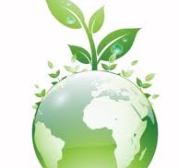 Leachate
Leachate
Leachate is any liquid material that drains from land or stockpiled material and contains significantly elevated concentrations of undesirable material derived from the material that it has passed through. Once in contact with decomposing solid waste, the percolating water becomes contaminated and if it then flows out of the waste material it is termed leachate. Additional leachate volume is produced during this decomposition of carbonaceous material producing a wide range of other materials including methane, carbon dioxide,ammonia and a complex mixture of organic acids etc.
Related Posts with thumbnails for bloggerblogger widgets
Continue reading..
General issues on Environmental ecology : Fossil Fuels
By
Admin
Petroleum and natural gas are fuels formed by the anaerobic decomposition of remains of organisms including phytoplankton and zooplankton that settled to the sea or lake bottom in large quantities under anoxic conditions, millions of years ago and sometimes exceeds 650 million years. Over geological time, this organic matter, mixed with mud, got buried under heavy layers of sediment. The resulting high levels of heat and pressure caused the organic matter to chemically alter, first into a waxy material known as kerogen which is found in oil shales, and then with more heat into liquid and gaseous hydrocarbons in a process known as catagenesis. Fossil fuels contain high percentages of carbon and include coal, petroleum, and natural gas. Currenlty, primary sources of energy consisted of petroleum 36.0%, coal 27.4%, natural gas 23.0%, amounting to an 86.4% share for fossil fuels in primary energy consumption in the world. Non-fossil sources included hydroelectric 6.3%, nuclear 8.5%, and others (geothermal, solar, tide, wind, wood, waste) amounting to 0.9% only. World energy consumption was growing about 2.3% per year.
Related Posts with thumbnails for bloggerblogger widgets
Continue reading..
General issues on Environmental ecology : Greenhouse Gases
26 Mar 2012
By
Admin
The greenhouse effect is the process by which absorption and emission of infrared radiation by gases in the atmosphere warm a planet's lower atmosphere and surface. Greenhouse gases are those that can absorb and emit infrared radiation. Greenhouse gases greatly affect the temperature of the Earth; without them, Earth's surface would be on average about 33 °C colder than at present. The major greenhouse gases are water vapor, which causes about 36–70% of the greenhouse effect; carbon dioxide (CO2), which causes 9–26%; methane (CH4), which causes 4–9%; and ozone (O3), which causes 3–7%.
Related Posts with thumbnails for bloggerblogger widgets
Continue reading..
General issues on Environmental ecology : Pollution
By
Admin
Pollution is the introduction of contaminants into a natural environment that causes instability, harm or discomfort to the ecosystem. A point source of pollution is a single identifiable source of air, water, thermal, noise or light pollution. Some examples are 1. Water pollution from an oil refinery wastewater discharge outlet, 2.Noise pollution from a jet engine, 3. Light pollution from an intrusive street light etc. Nonpoint source (NPS) pollution refers to both water and air pollution from diffuse sources. Although these pollutants have originated from a point source, the long-range transport ability and multiple sources of the pollutant make it a nonpoint source of pollution. Runoff of soil and fertilizer during a rain storm can be considered as a Nonpoint source (NPS) pollution.
Related Posts with thumbnails for bloggerblogger widgets
Continue reading..
General issues on Environmental ecology : Global warming
By
Admin
Global warming refers to the rising average temperature of Earth's atmosphere and oceans, which began to increase in the late 19th century and is projected to continue rising. Since the early 20th century, Earth's average surface temperature has increased by about 0.8 °C, with about two thirds of the increase occurring since 1980.Most of it is caused by increasing concentrations of greenhouse gases produced by human activities such as deforestation and burning fossil fuels. Recently World Meteorological Organization Secretary-General Michel Jarraud warned that the consequences of global warming could be permanent. "The world is warming because of human activities and this is resulting in far-reaching and potentially irreversible impact on our Earth, atmosphere and oceans," he said.
Related Posts with thumbnails for bloggerblogger widgets
Continue reading..
Revolutionaries of Indian Freedom Struggle | Indian History
21 Mar 2012
By
Admin
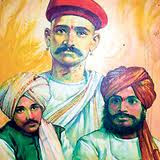 Chapekar Brothers
Chapekar Brothers
The three Chapekar brothers, Damodar Hari, Balkrishna Hari and Vasudeo Hari from Maharashtra, were known for their revolutionary actions in late 1890s. In 1896, Pune was hit by bubonic plague and by the end of February 1897 thousands of people died. During this period, a Special Plague Committee was formed, under the chairmanship of W. C. Rand, an Indian Civil Services officer, and troops were brought in to deal with the emergency. He used tyrannical methods and harassed the people. The measures employed included forced entry into private houses, examination of occupants, evacuation to hospitals and segregation camps, removing and destroying personal possessions, and preventing plague cases from entering or leaving the city. The Chapekar brothers decided to take the revenge on W. C. Rand. In 1897, Rand and his military escort were shot by them while returning from the celebrations of Diamond Jubilee of the coronation of Queen Victoria at Government House. All three brothers were found guilty and hanged. This action of Chaphekar brothers was the first reaction of Indian revolutionaries against British atrocities in India during plague epidemic and was first political murder in Indian freedom struggle.
Related Posts with thumbnails for bloggerblogger widgets
Continue reading..
Migration Types, Causes and Consequences | Geography
By
Admin
Migration has been an integral part and a very important factor in redistributing population over time and space. India has witnessed the waves of migrants coming to the country from Central and West Asia and also from Southeast Asia. In fact, the history of India is a history of waves of migrants coming and settling one after another in different parts of the country. Similarly, large numbers of people from India too have been migrating to places in search of better opportunities specially to the countries of the Middle-East, Western Europe, America, Australia and East and South East Asia.
Related Posts with thumbnails for bloggerblogger widgets
Continue reading..
Population Distribution, Density, Growth and Composition | Geography
20 Mar 2012
By
Admin
The people are very important component of a country. India is the second most populous country after China in the world with its total population of 1.22 billion (2012). India’s population is larger than the total population of North America, South America and Australia put together. The first population Census in India was conducted in 1872 but its first complete Census was conducted only in 1881. Among the socio-economic and historical factors of distribution of population, important ones are evolution of settled agriculture and agricultural development; pattern of human settlement; development of transport network, industrialisation and urbanisation.
Related Posts with thumbnails for bloggerblogger widgets
Continue reading..
Develpoment on Indian Cities (1850 - 1900) | Indian History
By
Admin
In the beginning of 1600s all three cities - Madras, Calcutta and Bombay were originally fishing and weaving villages. They became important centres of trade due to the economic activities of the English East India Company. Company agents settled in Madras in 1639 and in Calcutta in 1690. Bombay was given to the Company in 1661 by the English king, who had got it as part of his wife’s dowry from the king of Portugal. The Company established trading and administrative offices in each of these settlements. By the middle of the nineteenth century these settlements had become big cities from where the new rulers controlled the country.
Related Posts with thumbnails for bloggerblogger widgets
Continue reading..
Indian Women Freedom Fighters | Kamaladevi Chattopadhyay
19 Mar 2012
By
Admin
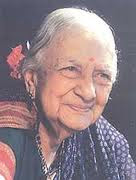 Kamaladevi Chattopadhyay (1903 – 1988) was an Indian social reformer, freedom fighter, and most remembered for her contribution to Indian independence movement, for being the driving force behind the renaissance of Indian handicrafts, handlooms, and theatre in post-Independence India, and for upliftment of the socio-economic standard of Indian women by pioneering the co-operative movement in India. In 1917, when was only fourteen years of age, she was married to Krishna Rao, and within two years she was widowed, while she was still at school. According to orthodox Hindu rules of the times, being a widow she was not allowed to continue her education, yet she defiantly moved to Chennai, and continued her education from St. Mary's School, Chennai and finally completed her high school in 1918.
Kamaladevi Chattopadhyay (1903 – 1988) was an Indian social reformer, freedom fighter, and most remembered for her contribution to Indian independence movement, for being the driving force behind the renaissance of Indian handicrafts, handlooms, and theatre in post-Independence India, and for upliftment of the socio-economic standard of Indian women by pioneering the co-operative movement in India. In 1917, when was only fourteen years of age, she was married to Krishna Rao, and within two years she was widowed, while she was still at school. According to orthodox Hindu rules of the times, being a widow she was not allowed to continue her education, yet she defiantly moved to Chennai, and continued her education from St. Mary's School, Chennai and finally completed her high school in 1918.
Related Posts with thumbnails for bloggerblogger widgets
Continue reading..
Mahatma Gandhi and the Nationalist Movement | Indian History
12 Mar 2012
By
Admin
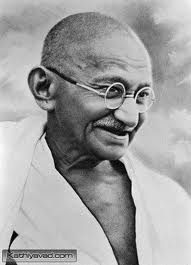 In January 1915, Mohandas Karamchand Gandhi returned to his homeland after two decades of stay in South Africa, where he went as a lawyer, and in time became a leader of the Indian community in that territory. It was in South Africa that Mahatma Gandhi first forged the distinctive techniques of non-violent protest known as satyagraha, first promoted harmony between religions, and first alerted upper -caste Indians to their discriminatory treatment of low castes and women. The India that Mahatma Gandhi came back to in 1915 was rather different from the one that he had left in 1893. Although still a colony of the British, it was far more active in a political sense. The Indian National Congress now had branches in most major cities and towns. Through the Swadeshi movement of 1905-07 it had greatly broadened its appeal among the middle classes. That movement had thrown up some towering leaders – among them Bal Gangadhar Tilak of Maharashtra, Bipin Chandra Pal of Bengal, and Lala Lajpat Rai of Punjab.
In January 1915, Mohandas Karamchand Gandhi returned to his homeland after two decades of stay in South Africa, where he went as a lawyer, and in time became a leader of the Indian community in that territory. It was in South Africa that Mahatma Gandhi first forged the distinctive techniques of non-violent protest known as satyagraha, first promoted harmony between religions, and first alerted upper -caste Indians to their discriminatory treatment of low castes and women. The India that Mahatma Gandhi came back to in 1915 was rather different from the one that he had left in 1893. Although still a colony of the British, it was far more active in a political sense. The Indian National Congress now had branches in most major cities and towns. Through the Swadeshi movement of 1905-07 it had greatly broadened its appeal among the middle classes. That movement had thrown up some towering leaders – among them Bal Gangadhar Tilak of Maharashtra, Bipin Chandra Pal of Bengal, and Lala Lajpat Rai of Punjab.The three were known as “Lal, Bal and Pal”, the alliteration conveying the all-India character of their struggle, since their native provinces were very distant from one another. Where these leaders advocated militant opposition to colonial rule, there was a group of “Moderates” who preferred a more gradual and persuasive approach. Among these Moderates was Gandhiji’s acknowledged political mentor, Gopal Krishna Gokhale, as well as Mohammad Ali Jinnah. On Gokhale’s advice, Gandhiji spent a year travelling around British India, getting to know the land and its peoples.
Related Posts with thumbnails for bloggerblogger widgets
Continue reading..
Partition of India | History of India
7 Mar 2012
By
Admin
 The Partition of British India into the sovereign states of India and Pakistan led to many sudden developments. Thousands of lives were snuffed out, many others changed dramatically, cities changed, India changed, a new country was born, and there was unprecedented genocidal violence and migration. Partition was a culmination of a communal politics that started developing in the opening decades of the twentieth century. They suggest that separate electorates for Muslims, created by the colonial government in 1909 and expanded in 1919, crucially shaped the nature of communal politics. Over 10 million people were uprooted from their homelands and forced to migrate.
The Partition of British India into the sovereign states of India and Pakistan led to many sudden developments. Thousands of lives were snuffed out, many others changed dramatically, cities changed, India changed, a new country was born, and there was unprecedented genocidal violence and migration. Partition was a culmination of a communal politics that started developing in the opening decades of the twentieth century. They suggest that separate electorates for Muslims, created by the colonial government in 1909 and expanded in 1919, crucially shaped the nature of communal politics. Over 10 million people were uprooted from their homelands and forced to migrate.
Related Posts with thumbnails for bloggerblogger widgets
Continue reading..
Framing of Indian Constitution | Indian History
6 Mar 2012
By
Admin
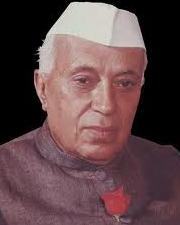 The Indian Constitution, which came into effect on 26 January 1950,has the dubious distinction of being the longest in the world. But its length and complexity are perhaps understandable when one considers the country’s size and diversity. At Independence, India was not merely large and diverse, but also deeply divided. A Constitution designed to keep the country together, and to take it forward, had necessarily to be an elaborate, carefully-worked-out, and painstakingly drafted document. For one thing, it sought to heal wounds of the past and the present, to make Indians of different classes, castes and communities come together in a shared political experiment. On 15 August 1947, India had been made free, but it had also been divided. Through the late 1940s the two leading Indian political parties, the Congress and the Muslim League, had repeatedly failed to arrive at a settlement that would bring about religious reconciliation and social harmony. The Great Calcutta Killings of August 1946 began a year of almost continuous rioting across northern and eastern India The violence culminated in the massacres that accompanied the transfer of populations when the Partition of India was announced.
The Indian Constitution, which came into effect on 26 January 1950,has the dubious distinction of being the longest in the world. But its length and complexity are perhaps understandable when one considers the country’s size and diversity. At Independence, India was not merely large and diverse, but also deeply divided. A Constitution designed to keep the country together, and to take it forward, had necessarily to be an elaborate, carefully-worked-out, and painstakingly drafted document. For one thing, it sought to heal wounds of the past and the present, to make Indians of different classes, castes and communities come together in a shared political experiment. On 15 August 1947, India had been made free, but it had also been divided. Through the late 1940s the two leading Indian political parties, the Congress and the Muslim League, had repeatedly failed to arrive at a settlement that would bring about religious reconciliation and social harmony. The Great Calcutta Killings of August 1946 began a year of almost continuous rioting across northern and eastern India The violence culminated in the massacres that accompanied the transfer of populations when the Partition of India was announced.
Related Posts with thumbnails for bloggerblogger widgets
Continue reading..
Global Dimming | Causes and Impact
5 Mar 2012
By
Admin
 Global Dimming
Global Dimming
Global dimming is the gradual reduction in the amount of global direct irradiance at the Earth's surface. It is thought that global dimming is probably due to the increased presence of aerosol particles in the atmosphere caused by human action. Aerosols and other particulates absorb solar energy and reflect sunlight back into space. Increased pollution causes more particulates and thereby creates clouds consisting of a greater number of smaller droplets (that is, the same amount of water is spread over more droplets). The smaller droplets make clouds more reflective, so that more incoming sunlight is reflected back into space and less reaches the Earth's surface. Al first global dimming sounds like an ironic saviour for climatic changes including global warming.However, now its believed that global dimming has caused severe drought in several parts of the world as the northern hemisphere oceans were not warmed enough to form rainfall.
Related Posts with thumbnails for bloggerblogger widgets
Continue reading..
JNNSM | Jawaharlal Nehru National Solar Mission
4 Mar 2012
By
Admin
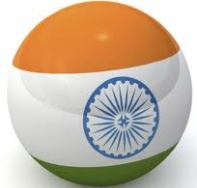 The National Solar Mission is a major initiative of the Government of India and State Governments to promote ecologically sustainable growth while addressing India’s energy security challenge. It will also constitute a major contribution by India to the global effort to meet the challenges of climate change. India is a tropical country, where sunshine is available for longer hours per day and in great intensity. Solar energy, therefore, has great potential as future energy source. It also has the advantage of permitting the decentralized distribution of energy, thereby empowering people at the grassroots level.
The National Solar Mission is a major initiative of the Government of India and State Governments to promote ecologically sustainable growth while addressing India’s energy security challenge. It will also constitute a major contribution by India to the global effort to meet the challenges of climate change. India is a tropical country, where sunshine is available for longer hours per day and in great intensity. Solar energy, therefore, has great potential as future energy source. It also has the advantage of permitting the decentralized distribution of energy, thereby empowering people at the grassroots level.
Related Posts with thumbnails for bloggerblogger widgets
Continue reading..
General Studies Online | Latest Health News India | Feb 2012
3 Mar 2012
By
Admin
Health to be allotted 2.5% of GDP by end of 12th Plan
A high-level meeting at the Prime Minister's Office decided to increase the total government expenditure on the health sector to 2.5 per cent of the GDP by the end of the coming 12th Plan period, from the current level of around 1.4 per cent of the GDP. The meeting decided to request the Planning Commission to allocate adequate resources to achieve the target and motivate and incentivise the States since health was primarily a State subject and outlay of States for the sector would be critical in this regard. Also the meeting decided that the Health Ministry should prepare a “clear” roadmap to merge all the schemes under the National Rural Health Mission to bring them under one umbrella. The merger may begin from the coming financial year and be completed by 2013-14.
A high-level meeting at the Prime Minister's Office decided to increase the total government expenditure on the health sector to 2.5 per cent of the GDP by the end of the coming 12th Plan period, from the current level of around 1.4 per cent of the GDP. The meeting decided to request the Planning Commission to allocate adequate resources to achieve the target and motivate and incentivise the States since health was primarily a State subject and outlay of States for the sector would be critical in this regard. Also the meeting decided that the Health Ministry should prepare a “clear” roadmap to merge all the schemes under the National Rural Health Mission to bring them under one umbrella. The merger may begin from the coming financial year and be completed by 2013-14.
Related Posts with thumbnails for bloggerblogger widgets
Continue reading..
Land and Water Resources | NCERT Standard 8 | Social Science
By
Admin
Land : Land is among the most important natural resources. It covers only about thirty per cent of the total area of the earth’s surface and all parts of this small percentage are not habitable. The uneven distribution of population in different parts of the world is mainly due to varied characteristics of land and climate. Ninety per cent of the world population occupies only thirty per cent of land area. The remaining seventy per cent of the land is either sparsely populated or uninhabited.
Related Posts with thumbnails for bloggerblogger widgets
Continue reading..
Mineral and Power Resources | NCERT Standard 8 | Social Science
By
Admin
Minerals : Rocks on earth have several materials called minerals mixed in them. These minerals are scattered throughout the earth’s rocky crust. A naturally occurring substance that has a definite chemical composition is a mineral. Minerals are not evenly distributed over space. They are concentrated in a particular area or rock formations. Minerals are formed in different types of geological environments, under varying conditions. They are created by natural processes without any human interference. They can be identified on the basis of their physical properties such as colour, density, hardness and chemical property such as solubility. The salt in our food and graphite in your pencil are also minerals.
Related Posts with thumbnails for bloggerblogger widgets
Continue reading..


